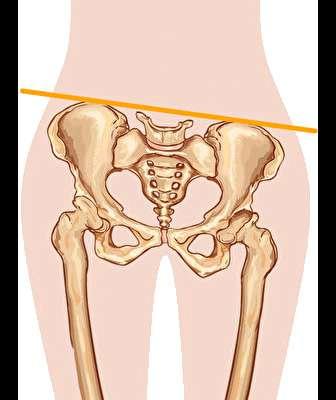
4 minute read
TO LOWER BACK PAIN WITH TREE HUGGING POSE AND ASIAN SQUAT
from VELO Magazine 2023
by Vision Index
If prolonged bike rides give you lower back pain, it is a sign of a tilted pelvis. Corrective exercise specialists Steve Zhou is an expert with lots of helpful workouts. He explains “the biggest problem in cycling is that by default, cyclists ride with their pelvises tilted which further compromises their knees and feet.” Cyclists with tilted pelvises ride unevenly that they twist their lumbar to go straight. They over compensate by shifting their thoracic vertebrae to maintain balance which leads to painful lower backs.
The brain has to be involved before athletes remember movements clearly. Zhou gives specific directions to cyclists to correct their postures, this includes aligning your sit bones, tuck in your stomach, align your knees, exert 80% power on your left leg, relax your hands and put your weight on the saddle. Cyclists should practice aligning their pelvis on stationary bikes first. After cyclists align their sit bones, the pelvis becomes straight followed by the alignment of their knees. In the beginning, cyclists need to check visually if their knees are aligned. Eventually, their knees should be aligned at all times with the help of muscle memory.
Advertisement

As most people are right-handed and thusly right legs are the dominant legs, the non-dominant left legs have always been passive. It is natural for most cyclists to push harder with their right legs when they need to speed up or are exhausted. Hence, the right knee tends to push forward and the pelvis becomes tilted. Cyclists must remind themselves to exert more force on their left leg to balance their power output. In addition to reducing lower back pain, correct posture results in higher performance.
For those who suffer from lower back pain, the following two corrective exercises help to alleviate the pain caused by cycling.

Corrective Exercise Specialist: Steven Zhou

1. Tree hugging
Either sitting, standing or lying on the bed, raise and stretch out your arms forward, shoulder high with your palms open. Inhale deeply and imagine you are hugging a huge California redwood. With a long exhale, tuck in your abs. Relax your rib cage and waist. If the abdominal muscles are over-stretched, then the pelvis will tilt forward.
Zhou strongly suggests making this exercise your daily bedtime ritual for it will align your vertebrae and reduce the over-arching waist. Even if you toss and turn at night, the gap between your waist and the bed is not too big. Lay your body weight on the bed evenly with your waist as close to the bed as possible is the secret to avoiding a kink in the neck. Jokingly, Zhou concludes, “Befriend the earth! Only when you stop resisting the earth can you be really relaxed.”
2. Asian Squat (Taiwanese Squat)


Zhou explains “Do this exercise as lazy as possible is the key!” Stand with your feet shoulder width apart with your toes pointing forward and outward. Slowly lower yourself into a deep squatting position with your arms between your legs or on your knees. Relax your waist and shift your weight to the lower back. Exhale deeply and further relax your lumbar and lower back until your body weight is at your bottom.
Note: If you feel unbalanced squatting this way, try it next to something that you can hold on to. If your ankles feel tight, make them more comfortable by using padding underneath.
THE NEW VELO PLANT IN VIETNAM, 28,000 SQUARE METERS IN SIZE
Since October 3rd, 2022, a newly established Velo facility in Tinh Binh Duong, Vietnam has been operational. The factory spans 28,000 square meters and is equipped with the latest technology, allowing for an annual production capacity of 3.6-4 billion saddles.
THE NETHERLANDS INAUGURATED THE WORLD’S FIRST UNDERWATER PARKING GARAGE FITS 7,000 BICYCLES
With a population of 17.8 million, the Netherlands boasts over 23 million bicycles. In 2019, the government of Amsterdam, the renowned "paradise for cyclists," invested €60 million to increase the availability of highly sought-after bike parking spaces. To achieve this, they temporarily drained the water around Central Station and built the world's first underwater garage capable of accommodating up to 7,000 bikes. As of this January, cyclists can utilize this facility for free during the first 24 hours and pay a fee of €1.35 for each additional 24hour period thereafter. Cyclists can easily connect to various modes of transportation, such as the subway, train, ferry, tram, or bus, to continue their journeys. Source: amsterdam.nl

The First Steerable Bicycle Invented In 1817

In 1790, Comte de Sivrac sat on a wooden horse equipped with two attached wheels and was only able to move forward, as there was no handle for steering. In 1817, Karl Drais added a handle to steer the machine. This new innovation allowed people to walk and glide to move the device, similar to how toddlers ride balance bikes today. Constructed entirely from wood, this peculiar, horseless vehicle was very heavy.
Global Bicycle Cooperatives Urge Zero Bike Waste
Over the last decade, a surge of global non-profit bike co-ops has emerged with the aim of achieving zero bike waste by offering free tutorials on repairs, along with providing parts and tools to cyclists. According to Earth's Community Bicycle Organizations, since the establishment of the first bike co-op in Vienna in 1983, there are now nearly 1,000 bike co-ops worldwide, with a concentration in Europe, North America, Australia, and select cities in South America. These co-ops work in collaboration with local bike shops instead of being adversaries, given their different clienteles. Additionally, bike co-ops often purchase consumable parts or acquire clearance items from bike shops. The ultimate objective of both bike stores is to promote eco-friendly transportation and contribute to a cleaner planet. Map of bike co-ops (Earth's Community Bicycle Organizations - Google My Maps)











